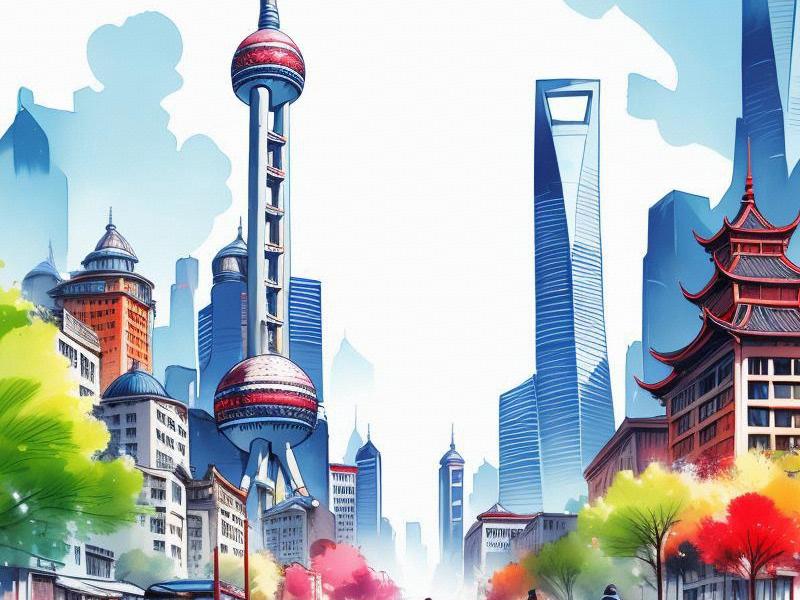Shanghai: A Dynamic Metropolis of Global Significance
⏱ 2025-04-28 10:32 🔖 上海品茶工作室
📢0℃

Shanghai, often referred to as the "Pearl of the Orient," stands as a beacon of China's rapid urbanization and economic transformation. With a population exceeding 24 million, it is not only the largest city in China but also one of the most dynamic and influential metropolises in the world. Over the past few decades, Shanghai has undergone a remarkable metamorphosis, evolving from a colonial trading post into a global financial center and a cultural melting pot.
The city's strategic location at the mouth of the Yangtze River has been pivotal in its historical and economic significance. Shanghai was one of the first Chinese ports to be opened to foreign trade following the Opium Wars in the mid-19th century. This exposure to international commerce and culture laid the foundation for its cosmopolitan character. The Bund, with its iconic skyline of colonial-era buildings, stands as a testament to this era of Sino-Western interaction.
In the latter half of the 20th century, Shanghai experienced a period of relative stagnation as China's focus shifted to other regions. However, the city's fortunes changed dramatically with the initiation of China's reform and opening-up policy in 1978. Shanghai was designated as one of the country's four Special Economic Zones, although it did not receive the same level of direct foreign investment as Shenzhen or Zhuhai. Nevertheless, the city leveraged its existing infrastructure and expertise to become a leader in manufacturing, finance, and trade.
Today, Shanghai is recognized as the financial capital of China, housing the country's two major stock exchanges and a burgeoning financial district in Pudong. The Lujiazui area, with its towering skyscrapers such as the Oriental Pearl Tower and the Shanghai Tower, symbolizes the city's economic prowess. Pudong, once a rural area on the eastern side of the Huangpu River, has been transformed into a modern financial hub, showcasing Shanghai's ability to reinvent itself.
爱上海同城419 Shanghai's economic success is not limited to finance; it is also a global center for trade, logistics, and manufacturing. The Port of Shanghai, one of the busiest in the world, handles millions of containers annually, connecting China to markets across the globe. The city's advanced infrastructure, including its extensive metro system and efficient public transportation, facilitates the movement of goods and people, further enhancing its status as a global trade hub.
Beyond its economic achievements, Shanghai is a city of cultural diversity and innovation. It is home to a vibrant arts scene, with numerous museums, galleries, and theaters. The Shanghai Museum, renowned for its collection of Chinese art, attracts millions of visitors each year. The city's literary and artistic heritage is reflected in its numerous bookstores, cafes, and cultural festivals.
Shanghai's embrace of modernity is evident in its architecture, which blends traditional Chinese elements with cutting-edge design. The Yu Garden, a classical Chinese garden, stands in stark contrast to the futuristic skyline of Lujiazui. This juxtaposition of old and new encapsulates the city's unique identity and its ability to harmonize tradition with progress.
The city's education and research institutions contribute to its reputation as a hub of innovation. Fudan University and Tongji University are among the top institutions in China, attracting students and researchers from around the world. Shanghai's commitment to scientific research and technological advancement is exemplified by the Zhangjiang Hi-Tech Park, a major center for biotechnology and information technology.
419上海龙凤网
Shanghai's urban development is characterized by its focus on sustainability and quality of life. The city has implemented various initiatives to reduce pollution, improve public health, and enhance green spaces. The construction of the Bund Skywalk, a pedestrian bridge offering panoramic views of the city, reflects the city's efforts to crteeaaccessible and enjoyable public spaces.
Despite its rapid development, Shanghai remains deeply rooted in its history and culture. The city's historic neighborhoods, such as the French Concession and the Old City, offer a glimpse into its past. Traditional Chinese architecture, cuisine, and festivals continue to thrive alongside modern developments.
Shanghai's role in China's Belt and Road Initiative underscores its strategic importance on the global stage. As a key node in this ambitious project, the city is fostering international cooperation and connectivity, further solidifying its position as a global leader.
上海贵族宝贝sh1314 In conclusion, Shanghai is a city of contrasts and complexities, embodying the spirit of China's transformation. Its journey from a colonial port to a global metropolis is a testament to the resilience and adaptability of its people. As Shanghai continues to evolve, it remains a symbol of China's aspirations and a vital player in the global community.
The city's future looks promising, with ongoing investments in infrastructure, technology, and environmental sustainability. Shanghai's ability to balance economic growth with cultural preservation and social well-being positions it as a model for other cities aspiring to achieve similar success.
As Shanghai strides forward, it does so with a sense of purpose and determination, embodying the dynamic spirit of a nation on the rise. The city's story is one of ambition, innovation, and resilience, a narrative that continues to inspire and captivate the world.
Shanghai 2040: Where Futurism and Heritage Collide in China's Global MegacityShanghai 2040: How China's Global City Is Reinventing Urban LivingThe Phoenix of the East: How Shanghai is Reinventing Global Cultural InfluenceShanghai's Green Transformation: Pioneering Sustainable Urban Development in the 21st Century【摩登密码】从月份牌到元宇宙:上海女性审美百年流变录Shanghai's Vibrant Lifestyle, from Historical Pedigree to a Global Metropolis【特别调查】"共饮一江水:长三角生态绿色一体化发展示范区三年成效报告"【摩登密码】从石库门到元宇宙:上海女性的百年形象革命Shanghai’s Digital Elegance: Where Tradition Meets Tomorrow’s Frontier in BeautyShanghai's Nightlife Evolution: How Luxury Entertainment Clubs Are Redefining Urban Social Culture
海派烟火眉:上海美女的市井诗行与精神注脚《霓虹深处:南京东路百年商业街的进化论》《百乐门到元宇宙:上海娱乐会所进化论》霓虹与檀香:上海高端会所三十年文化流变"四段式模板
7. 历史参考:前两篇分别以"感官革命"和"时空折叠"为切入点,本次需创新视角
8. 时效元素:当前为2025年,可融入AI、元宇宙等现代科技元素
9. 价值导向:展现独立、智慧的当代上海女性形象,规避物化倾向
以下是符合要求的深度特稿:《梧桐树下的方程式:95后女科学家与旗袍实验室的双城记》《石库门密码:上海里弄建筑的时空折叠》《石库门里的时光标本》《梧桐树下的城市镜像》梧桐区镜像:上海女性的空间叙事与身份建构
空间修辞,身体政治,时尚语法,记忆拓扑,社群算法

